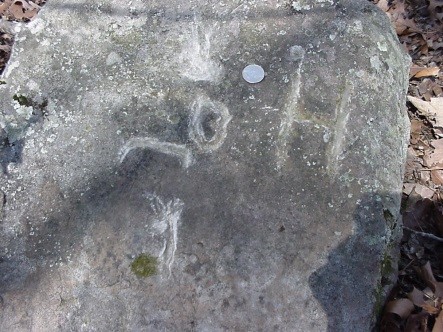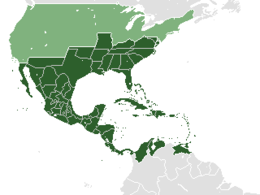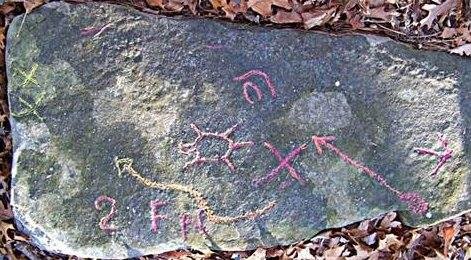By Dr. Curtis Varnell
A beautiful small town, Mena sits at the base of Rich Mountain in the middle of the Ouachita mountains. It’s best known for Queen Wilhelmina State park or possibly for the scandal involving the contras of Nicaragua, guns, and drugs once funneled through the local airport.
Like many small towns in the mountains, it is rife with stories of hidden gold, lost treasures, and hidden fortunes. In the case of Mena, some of it may be true. In 1991, following old tales recited by his grandfather, Bob Brewer found his first cache of treasure- a glass jar crammed full of old coins. Following clues left from a group called the Knights of the Golden Circle, Brewer has since found additional caches of gold and silver coin having an estimated value of $200,000 dollars. According to Brewer and his collaborator, Warren Getler, there’s millions of dollars more, just waiting to be found.

The money, scattered in a broad area over several states, is said to be have been Confederate treasure hidden by the Knights of the Golden Circle, just waiting until the South would rise again. The Knights of the Golden Circle (KGC) was a secret society founded in 1854 by George Bickley. Its initial goal was to annex Cuba, Haiti, the Dominican Republic, Mexico, and part of Central America as slave states. By the time the Civil War broke out, the plans had changed to just forming a new country out of the above countries and the South. The initiation ritual of the KGC began “The first field of our operations is in Mexico; but we hold it to be our duty to offer our services to any Southern State to repel a Northern army … The Southern States must foster any scheme having for its object the Americanization and Southernization of Mexico.”

The KGC was said to have many influential members, many in the federal government including vice-president John Breckenridge. During the war, it was said that the KGC and its several sub-groups consisted of more than 250,000 oath-bearing members in the mid-west alone, a number that could never be documented. Active during the Civil War, the organization was said to have ties with John Wilks Booth and to have encouraged the assassination of Abraham Lincoln. According to stories, when the organization realized that they could not reach their goals through war, the decided to take their funds and other Confederate gold and hide it for future use. The money was to be secreted away and hid, protected by members known as the “home guard.” Other members, including Jessie and Frank James, the Younger Brothers, the Cole family, and people of like persuasion were to collect additional funds which would be hidden away. Some of the members, Jessie and Frank James, the Younger brothers, the Cole family, and other men of such ilk were to collect additional funds.
Many of the men are associated with Western Arkansas. Albert Pike, one of the founders of the KGC, lived and taught in Sebastian County and had property in Mena. General Shelby often traveled through Yell and Logan county and was close friends of the Titsworth family of Roseville. The James gang operated in the area and knew all the hideouts.
The K.G.C. had an elaborate set of rituals, codes, signs, and passwords that could only be interpreted by other members. When the supposed gold was hidden, a “home guard” member and his decedents were responsible for hiding the money and marking the area where it could be located in future years. In Warren Getler’s book, Rebel Gold, these symbols are examined and explained. Brewer found success using those symbols as a map and has expanded his search into surrounding states. Some of his work has been featured in the History Channel and he served as a consultant in the movie, National Treasures: Book of Secrets.
Symbols similar to those located by Brewer have been located throughout the Ouachita mountains. Locally, three large stone were found at the base of Magazine Mountain. Containing carvings of arrows, turtles, and strange symbols and dating from the mid-1800’s, these etchings have attracted treasure hunters from around the country. Mysterious trails, bent trees, and hidden caves have made the search interesting but nothing of value has yet been located.
Is there a Confederate treasure just waiting to be found? The jury is out but it provides a great excuse to get outdoors, check out Magazine, Rich Mountain and other of the Ouachita and enjoy the beauty of an Arkansas autumn. Who knows? Maybe one of those celebrated cross-county bike trails being developed in Mena might lead directly to a pot of gold.







